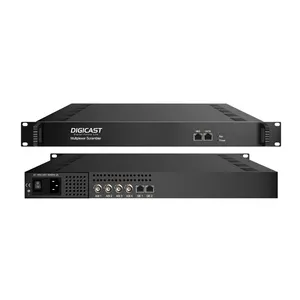Introduction to Multiplexers
Multiplexers, often abbreviated as MUX, are crucial elements in modern electronics, enabling multiple signals to be transmitted over a single line. Functioning as data selectors, multiplexers allow for efficient data management and transmission in various applications, ranging from telecommunications to computer networks. Their adaptability and efficiency illustrate why multiplexers are integral components in high-performance digital systems, making them fundamental in both commercial and residential technologies.
Types of Multiplexers
The versatility of multiplexers is highlighted by their various types, each tailored for specific applications and functions. Understanding the different types can guide users to choose the most suitable one for their needs:
- 2-to-1 Multiplexers: These are the simplest form, allowing two input signals to be channeled through a single output line.
- 4-to-1 Multiplexers: Capable of directing four input signals to a single output, enabling the routing of multiple data streams effectively.
- 8-to-1 Multiplexers: With the ability to select from eight different inputs, these multiplexers are designed for more complex operations in data management.
- 16-to-1 Multiplexers: The most advanced common type, allowing the selection of a signal from sixteen options, essential in high-density data environments.
Applications of Multiplexers
Multiplexers are utilized in various domains, highlighting their importance in both industry and everyday life. Here are some notable applications:
- Communication Systems: Used in telecommunications, multiplexers help in efficiently routing voice, video, and data signals.
- Data Acquisition Systems: They facilitate the connection of multiple sensors to a single channel, making data collection simpler and more efficient.
- Consumer Electronics: Found in devices like televisions and gaming consoles, multiplexers help manage multiple input sources.
- Computer Networks: In routers and network switches, multiplexers contribute to managing data flow and optimizing bandwidth use.
Features and Advantages of Multiplexers
The effectiveness of multiplexers can be attributed to their myriad features, which translate into significant advantages across various applications:
- Signal Integrity: Multiplexers ensure that signal quality is maintained during transmission, minimizing data loss.
- Reduced Complexity: By consolidating multiple signals into one path, multiplexers help in simplifying circuit designs.
- Cost-Effectiveness: Presenting a more economical solution by reducing the number of pathways required for signal routing.
- Scalability: Multiplexers are easily scalable, allowing for easy integration of additional inputs as systems grow.
Conclusion
In conclusion, multiplexers are indispensable in the realm of digital signal processing and data management. Their importance across various sectors cannot be overstated, as they optimize data flow, enhance system integration, and enable cost-effective solutions. With several types tailored for diverse applications, multiplexers stand out as a key component in our increasingly interconnected world. By understanding the features and advantages they offer, businesses can leverage multiplexers to improve operational efficiency and harness better communication capabilities.








































































































































































